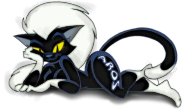

Mouse Pointer HandlingGeneral informationA new pointer code is verified to work with SDL driver. Also it is highly expected to work with VESA mode (since it uses the same generic software implementation in fakegfx.hidd). Also it is expected to work with ATI and NVidia drivers. It will not work with VGA driver; it still will display hardcoded red arrow. An overhaul of the driver is needed; i'm going to do it. The default pointer image hardcoded in Intuition really looks like an almost white triangle with a shadow, it's not a bug. Now some technical details... The whole thing works using graphics.library ExtSprite engine. Its behavior is modified according to the following: 1. There is a support for only one sprite in our display HIDD API. The same applies to graphics.library. GetExtSprite() always returns -1. This means that we have only sprite #0 and it's always allocated by the system. Intuition.library never calls GetExtSprite() or FreeSprite(). MoveSprite() on sprite #0 changes mouse pointer position. ChangeExtSprite() on sprite #0 changes its look. Any other sprite number is ignored. Old private pointer handling functions are removed. 2. Colors of the sprite are 17-19 colors of the screen's palette, the same as on original Amiga. For truecolor screens these colors are grabbed in ChangeExtSpriteA() and attached to the internal sprite bitmap. This means that setting palette has no effect on actual pointer colors until next ChangeExtSpriteA() (in intuition this happens at least on every window activation). For LUT screens everything will work. If the screen has less than 24 colors, it's impossible to use 17-19 colors. In this case pointer palette entries are shifted down to be 3 colors before last 4 colors of the screen. For example these will be colors 9-11 on 16-color VGA screen. Yes, the pointer may look not as expected if the application specifies a custom palette for the whole screen, but there's no way to work around this. 3. In theory the same system can support truecolor sprites. Note that AllocSpriteDataA() constructs sprite data from the bitmap. This means that we could pass any bitmap to it, not only planar 2-plane bitmap. Even truecolor bitmap with alpha channel. Currently this is not supported because of two restrictions: * AllocSpriteData() always creates internal sprite bitmap in LUT8 format. In order to support another formats AllocSpriteData() just has to be a little smarter and determine if source bitmap is a truecolor HIDD bitmap. * Display drivers always expect pointer shape in LUT8 format. This is also simple to overcome, but there's one little problem - it's problematic to dislay a truecolor sprite on a LUT screen. Let's remember that the user may run in VESA or even VGA mode, and the user should see at least SOME pointer image. Alpha-blended mouse pointerThis is done by adding proper alpha channel values to the sprite palette in ChangeExtSpriteA() and then obeying them in the driver. If we test and enable truecolor pointer support, we also could have alpha blending there. I think that if we specify truecolor sprite but have to display in on a CLUT screen, we can at least remap it somehow to 4 colors given by Intuition. The result will not be brilliant but at least it will be visible. |
Copyright (C) 1995-2024, The AROS Development Team. Wszystkie prawa zastrzeżone.
Amiga(R), AmigaOS(R), Workbench i Intuition are znakami towarowymi Amiga Inc. Wszystkie inne znaki towarowe należą do ich prawnych właścicieli. |



